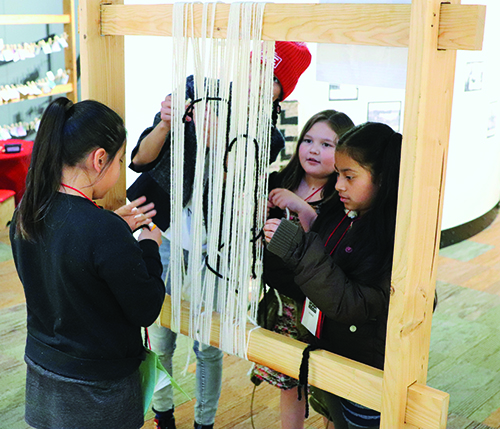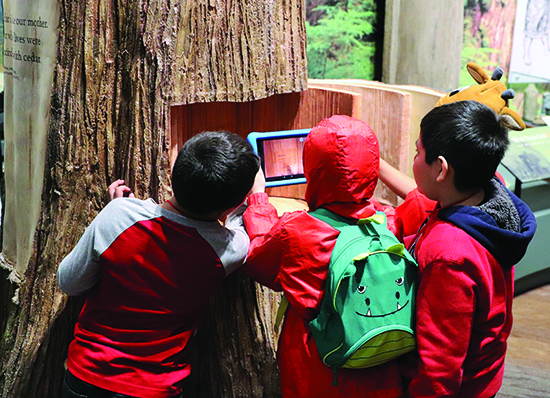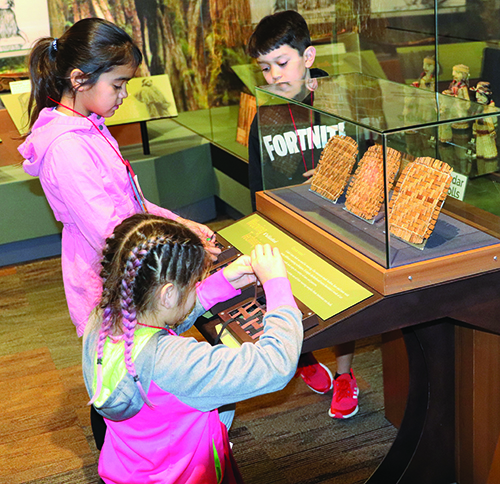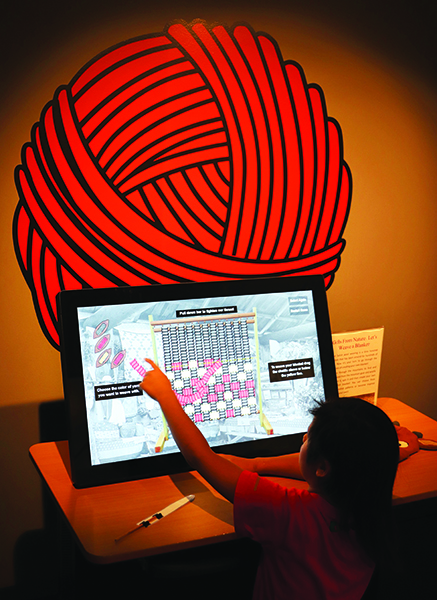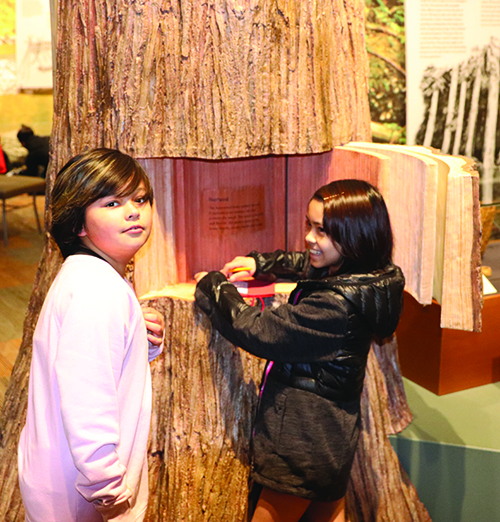By Micheal Rios, Tulalip News
School groups visit Hibulb Cultural Center (HCC) frequently to receive an educational tour of the 23,000 square foot facility dedicated to collecting and enhancing the traditional cultural values and history of the Tulalip Tribes. These school group tours always start in the HCC longhouse with a brief video presentation that introduces the legacy of the Tulalip people to students with minimal knowledge of Native peoples in general, let alone specific knowledge about the successors in interest to Snohomish, Snoqualmie and other tribes signatory to the Treaty of Point Elliot.
However, once a year when then the 3rd graders from Quil Ceda Tulalip (QCT) Elementary have their school tour the script is a bit different. These particular 3rd graders do have knowledge, an inherent history, and personal experiences galore with what it means to be a Native American citizen and Tulalip culture bearers. For Quil Ceda 3rd graders, their museum tour is less new information acquisition and more reinforcement of a history they breathe life into every day.
“We have a partnership with Marysville School District and the Indigenous Education Department to bring in every single 3rd grade class within the district and give them a museum a tour,” explains Mary Jane Topash, HCC Group Tour Specialist. “The Quil Ceda tours are unique because for a lot of the students it’s their own family history being exhibited, which means my tours with them are different. I can play off their background knowledge and personal histories they have as tribal members and growing up Tulalip.
“During the Quil Ceda tours we really reinforce key values and history points that make us Tulalip,” continued Mary Jane. “There were several students that went to the family tree section and entered their own tribal IDs to find their family connections within the Hibulb exhibits. That is something unique only they are able to connect with.”
From teachings of the cedar tree to lifeways of salmon, HCC exhibits echo traditional values many of the QCT students have heard and experienced many times over during their young lives. Of course that doesn’t mean they no longer get super excited to showcase their natural skills with a cedar weave, yarn pattern, or fish net…because they certainly do.
Young tribal members were seen routinely schooling their non-Native counterparts on what certain exhibits were really about. In some exhibits there is an option to hear narration in either English or traditional Lushootseed. Many of the kids didn’t hesitate to choose Lushootseed, making their teachers very proud.
While learning from the wool exhibit, the kids were hyped when they saw the puppet theater setup. Many took the opportunity to use their imagination and do creative storytelling all on their own with the puppets available. Also in the wool exhibit is a digital touch-screen game that teaches weaving basics in a comfortable setting today’s children are most used to. The interactive nature of such exhibits made learning all the more easier, while still holding the rambunctious groups attention.
“With many of the Quil Ceda third graders being Tulalip tribal members, we stressed the important and significance of our lifeways while exploring our canoes, cedar collection and life cycle of salmon exhibits,” shared museum assistant Cary Michael Williams. “We got into our 1855 treaty and explaining its importance to our everyday life today, and how our treaty rights allows us to live our culture.
“It was a very good opportunity to share more insight on what that means to them and their responsibility as tribal members to uphold those rights for future generations. It was an honor to see our young people interact with Hibulb and make connections they can take with them going forward while bringing cultural values into their own lives.”
The foundation of their Quil Ceda education allowed the four 3rd grade classes to use Hibulb educational spaces in an engaged and interactive way. Drawing from their own experiences and family history, students demonstrated traditional skills like fish net tying and cedar weaving, while practicing Lushootseed words to connect with various exhibits. Witnessing them interact with exhibits and cultural items with an innate understanding that required zero explanation is proof the next generation of culture bearers will have much to add to Tulalip’s history of resiliency and self-determination.
